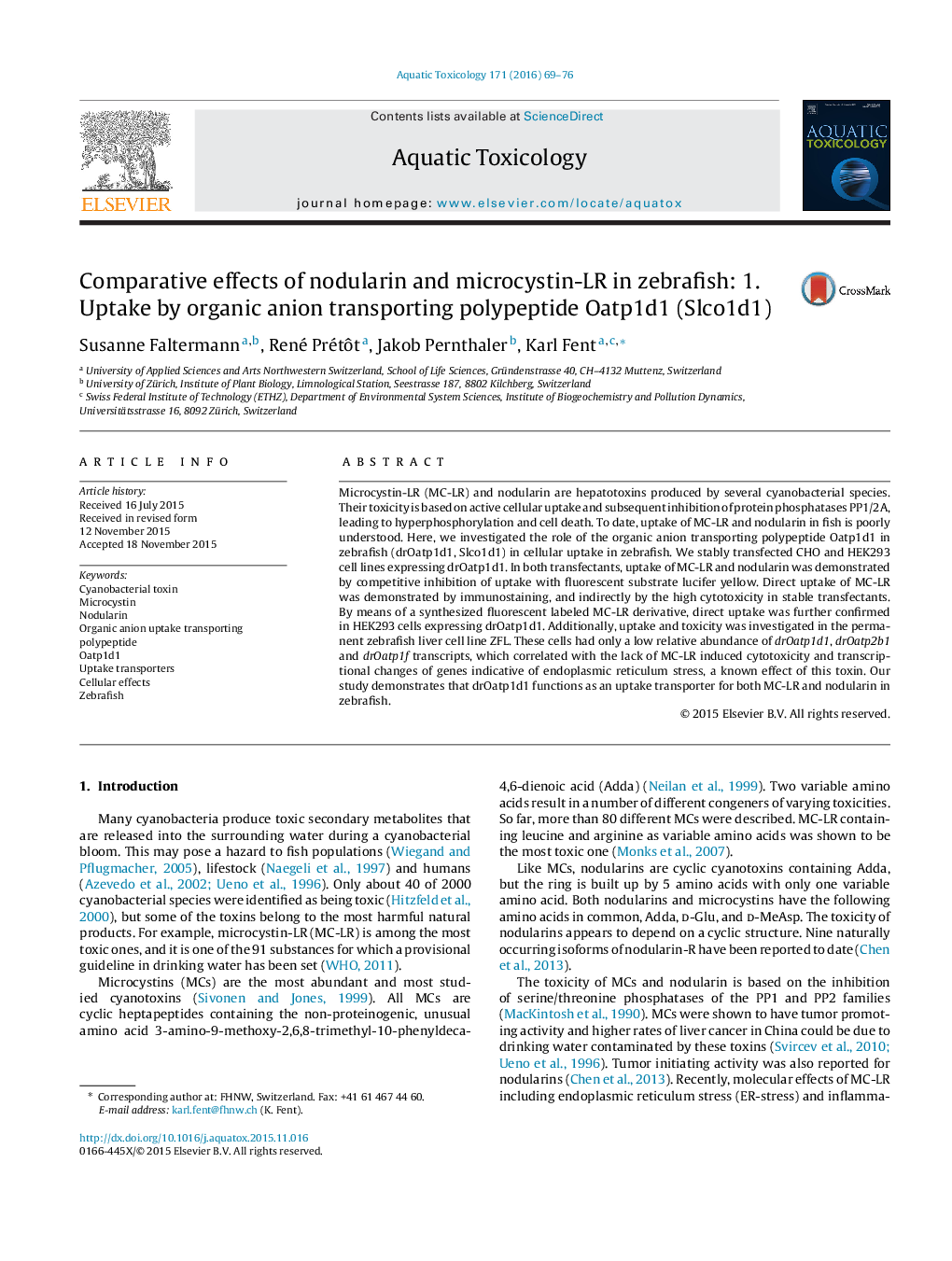| Article ID | Journal | Published Year | Pages | File Type |
|---|---|---|---|---|
| 4528951 | Aquatic Toxicology | 2016 | 8 Pages |
•We investigated the uptake of cyanotoxins by uptake transporters in zebrafish.•Organic anionic uptake transporter polypeptide (drOatp1d1) plays a significant role.•Direct and indirect methods were used to demonstrate the importance of drOatp1d1.•Cellular uptake of both microcystin-LR and nodularin occurred by drOatp1d1.
Microcystin-LR (MC-LR) and nodularin are hepatotoxins produced by several cyanobacterial species. Their toxicity is based on active cellular uptake and subsequent inhibition of protein phosphatases PP1/2A, leading to hyperphosphorylation and cell death. To date, uptake of MC-LR and nodularin in fish is poorly understood. Here, we investigated the role of the organic anion transporting polypeptide Oatp1d1 in zebrafish (drOatp1d1, Slco1d1) in cellular uptake in zebrafish. We stably transfected CHO and HEK293 cell lines expressing drOatp1d1. In both transfectants, uptake of MC-LR and nodularin was demonstrated by competitive inhibition of uptake with fluorescent substrate lucifer yellow. Direct uptake of MC-LR was demonstrated by immunostaining, and indirectly by the high cytotoxicity in stable transfectants. By means of a synthesized fluorescent labeled MC-LR derivative, direct uptake was further confirmed in HEK293 cells expressing drOatp1d1. Additionally, uptake and toxicity was investigated in the permanent zebrafish liver cell line ZFL. These cells had only a low relative abundance of drOatp1d1, drOatp2b1 and drOatp1f transcripts, which correlated with the lack of MC-LR induced cytotoxicity and transcriptional changes of genes indicative of endoplasmic reticulum stress, a known effect of this toxin. Our study demonstrates that drOatp1d1 functions as an uptake transporter for both MC-LR and nodularin in zebrafish.
